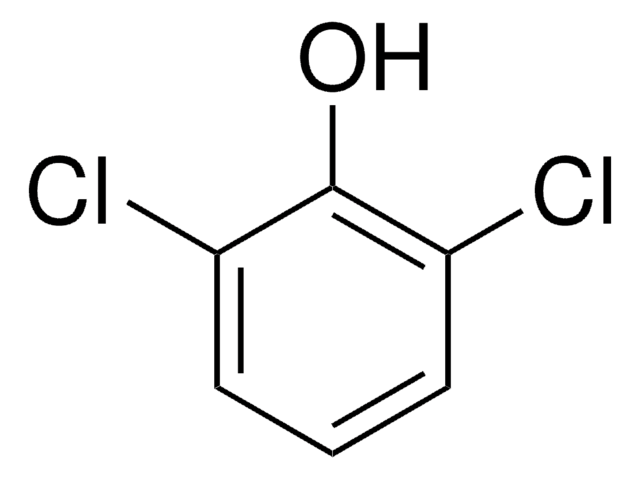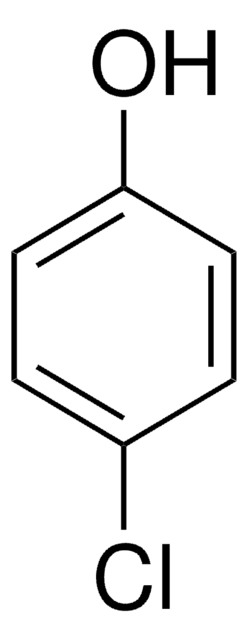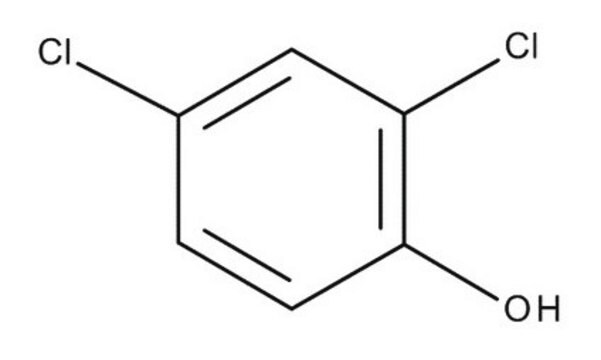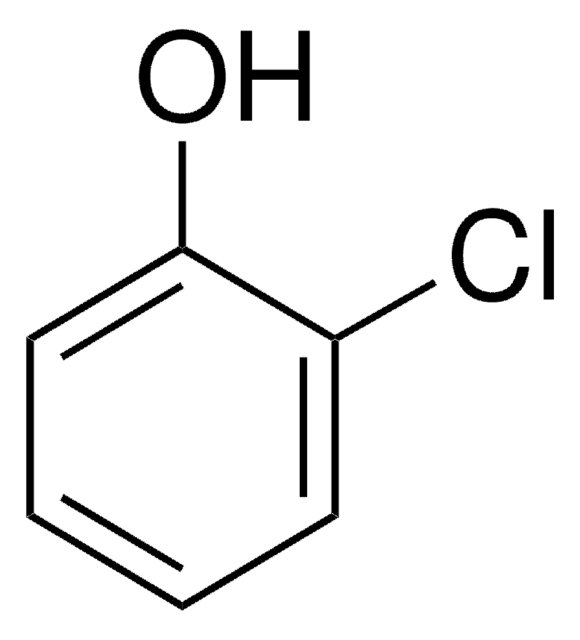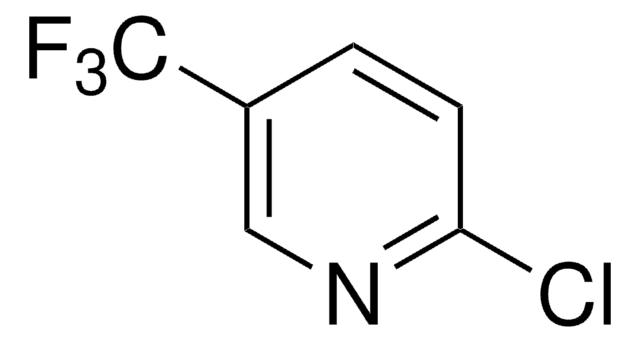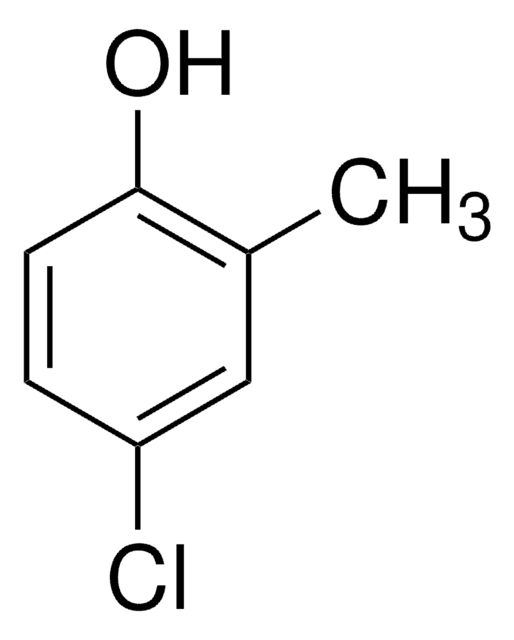Kluczowe dokumenty
105953
2,4-Dichlorophenol
99%
Synonim(y):
1,3-dichloro-4-hydroksybenzen, 2,4-DCP, 4,6-dichlorofenol, Kwas 2,4-dichlorofenowy
About This Item
Polecane produkty
Poziom jakości
Próba
99%
Formularz
solid
bp
209-210 °C (lit.)
mp
42-43 °C (lit.)
rozpuszczalność
methanol: soluble 1g in 10ml
ethanol: soluble 50 mg/mL
grupa funkcyjna
chloro
ciąg SMILES
Oc1ccc(Cl)cc1Cl
InChI
1S/C6H4Cl2O/c7-4-1-2-6(9)5(8)3-4/h1-3,9H
Klucz InChI
HFZWRUODUSTPEG-UHFFFAOYSA-N
Szukasz podobnych produktów? Odwiedź Przewodnik dotyczący porównywania produktów
Powiązane kategorie
Opis ogólny
Zastosowanie
Hasło ostrzegawcze
Danger
Zwroty wskazujące rodzaj zagrożenia
Zwroty wskazujące środki ostrożności
Klasyfikacja zagrożeń
Acute Tox. 3 Dermal - Acute Tox. 4 Oral - Aquatic Chronic 2 - Eye Dam. 1 - Skin Corr. 1B
Kod klasy składowania
6.1D - Non-combustible acute toxic Cat.3 / toxic hazardous materials or hazardous materials causing chronic effects
Klasa zagrożenia wodnego (WGK)
WGK 3
Temperatura zapłonu (°F)
231.1 °F - closed cup
Temperatura zapłonu (°C)
110.6 °C - closed cup
Środki ochrony indywidualnej
dust mask type N95 (US), Eyeshields, Faceshields, Gloves, type P2 (EN 143) respirator cartridges, type P3 (EN 143) respirator cartridges
Wybierz jedną z najnowszych wersji:
Masz już ten produkt?
Dokumenty związane z niedawno zakupionymi produktami zostały zamieszczone w Bibliotece dokumentów.
Klienci oglądali również te produkty
Nasz zespół naukowców ma doświadczenie we wszystkich obszarach badań, w tym w naukach przyrodniczych, materiałoznawstwie, syntezie chemicznej, chromatografii, analityce i wielu innych dziedzinach.
Skontaktuj się z zespołem ds. pomocy technicznej